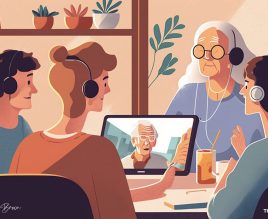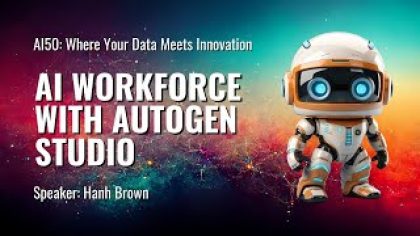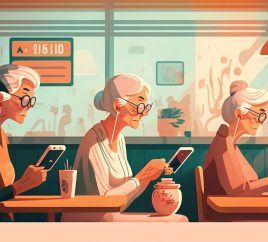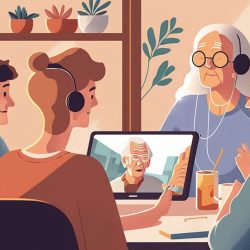Table of Contents
ToggleIn today’s rapidly evolving digital era, automation is becoming an integral part of marketing strategies across various industries. This trend has significant implications for senior living marketing, where personal connections have traditionally played a crucial role. As automation emerges as a game-changer, it’s worth exploring its transformative effects on this niche.
With technology being seamlessly integrated into seniors’ lives, it’s clear that senior living marketing needs to adapt and evolve. The manual, time-consuming marketing methods of yesteryears are giving way to more efficient and targeted automated strategies. Automation in marketing isn’t about replacing the human touch; rather, it’s about leveraging technology to enrich and augment those personal connections, thus making them more meaningful and impactful.
In the context of senior living marketing, the role of automation cannot be overstated. Think of it as a ‘digital assistant’ that helps marketers be more precise, more responsive, and more personal. From personalized email marketing to advanced data analytics, automation is a powerful tool that’s reshaping the way senior living communities connect with their target audience.
As we proceed, we’ll delve into the role of automation in senior living marketing, dissect its influence, and reflect upon its potential impacts. We’ll journey through this new digital landscape, discovering how automation is redefining marketing strategies and unveiling a fresh, unique perspective on how these changes could reshape senior living as we know it.
In essence, we’re about to embark on an exploration of an exciting “what if” scenario: What if the manual procedures and processes in senior living marketing are fully automated? How could this shift potentially transform senior living communities and enhance the lives of our seniors? Let’s find out.
The Power of Automation in Marketing
The transformative power of automation in marketing is driving a new era of efficiency, personalization, and innovation. As businesses aim to navigate the increasing complexities of customer engagement, automation tools provide a strategic advantage. They streamline marketing operations, reduce manual errors, and elevate customer experiences. Now, let’s dig deeper into understanding the role of automation in marketing.
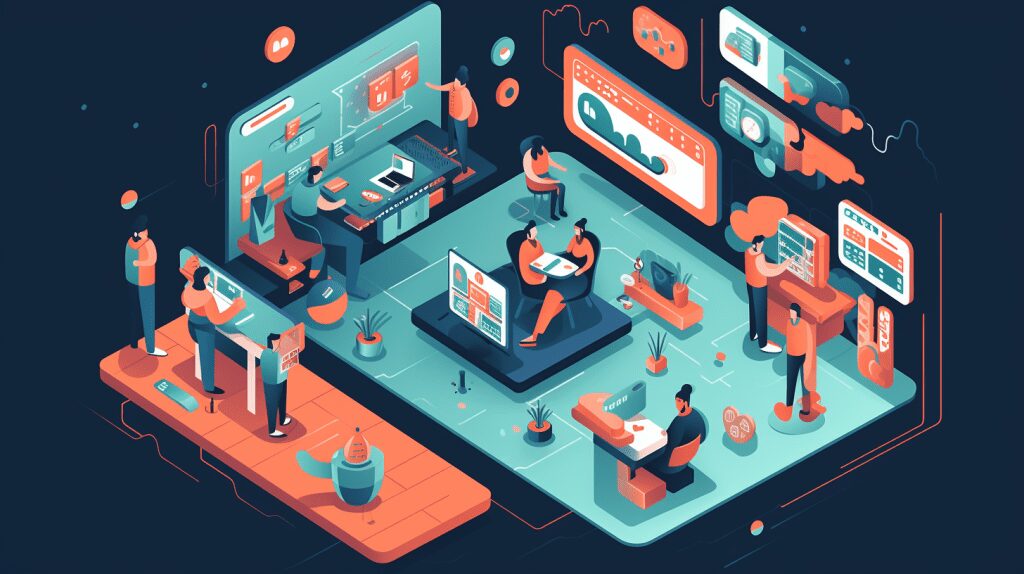
Understanding the Role of Automation in Marketing
Automation in marketing is like a silent, efficient, digital concierge that handles a multitude of tasks with precision. Its primary role is to increase efficiency and reduce the burden of repetitive tasks, freeing marketers to focus on more creative and strategic aspects.
With automation tools, companies can schedule social media posts, automate email campaigns, track customer behaviors, and analyze results with precision. These tools can send personalized messages at the right time, making customers feel seen and appreciated. Automation, in essence, amplifies a business’s capacity to engage with its audience effectively.
Moreover, automation reduces costs. It minimizes the time spent on routine tasks, decreases the potential for manual errors, and increases the effectiveness of marketing campaigns. By streamlining these processes, companies can use their resources more effectively and see a higher return on their marketing investments.
Additionally, automated marketing improves customer engagement. It enables businesses to deliver more personalized, relevant content, fostering stronger connections with customers. Through automation, companies can segment their audience, tailoring content to meet the unique needs of each segment, and enhancing engagement.
To sum up, the role of automation in marketing is crucial. It offers the triple benefit of increased efficiency, cost reduction, and improved customer engagement. This potent combination can significantly enhance a business’s marketing efforts, helping it stand out in today’s competitive landscape.
The Shift towards Automated Marketing
As the digital revolution propels forward, an ongoing shift towards automated marketing is evident. This shift is driven by the growing recognition of automation’s transformative potential and the desire to optimize marketing resources.
Marketers are increasingly harnessing automation tools to personalize communication, drive customer loyalty, and achieve scalable growth. They’re implementing marketing automation software that can manage multi-channel marketing campaigns, collect and analyze customer data, and optimize engagement strategies based on real-time insights.
Such automation tools are not just streamlining operations but are also offering unprecedented access to customer data. This data is instrumental in understanding customer behavior and preferences, thus enabling businesses to design more effective marketing strategies.
The benefits of this shift are manifold. It empowers businesses to manage larger volumes of marketing tasks efficiently. It allows for more personalized and targeted marketing efforts, improving the customer experience. Moreover, it gives companies the ability to track and analyze the effectiveness of their marketing campaigns, providing insights that can guide future strategies.
In the realm of senior living, the shift towards automated marketing holds immense potential. As senior living communities increasingly aim to provide personalized care and experiences, automation tools can help them better understand their residents’ needs and tailor their marketing efforts accordingly.
In conclusion, the shift towards automated marketing is an exciting development. It heralds a new era in marketing – one that is characterized by increased efficiency, personalized engagement, and data-driven strategies. As businesses embrace this shift, they’re poised to redefine their marketing approaches, ensuring they stay relevant and competitive in the digital age.
The Senior Living Market
The senior living market is a dynamic sector that is undergoing significant evolution, fueled by demographic shifts and changing consumer needs. This market comprises older adults who seek supportive living options that offer an optimal blend of independence and care. Understanding this audience is crucial for effective marketing. Let’s delve into the unique attributes of senior living consumers and why automation plays a key role in addressing their needs.

Understanding the Senior Living Consumer
The senior living consumer encompasses a diverse demographic, primarily made up of older adults who are either nearing retirement or already retired. This group has distinct characteristics, needs, and preferences that require careful consideration in marketing approaches.
Firstly, it’s essential to note that the seniors of today are not the same as previous generations. Many are tech-savvy, using smartphones, tablets, and computers to stay connected with friends, family, and the world. They’re active on social media, comfortable shopping online, and have an appetite for useful and relevant digital content.
Despite their increasing digital literacy, seniors still value personal, human connections. They appreciate sincere, empathetic communication and look for authenticity in their interactions with brands and services. When considering senior living options, they seek communities that offer not just quality care and facilities, but also a sense of belonging and purpose.
Moreover, seniors’ needs and preferences are as varied as their backgrounds. Some may require assisted living with access to healthcare services, while others may seek independent living with opportunities for social engagement and lifestyle enrichment. Consequently, a one-size-fits-all marketing approach fails to resonate.
In this context, automation in marketing becomes invaluable. Automated marketing platforms can collect and analyze data about seniors’ behaviors, needs, and preferences, allowing for personalized and targeted communication. By doing so, they facilitate a more meaningful connection with seniors, enhancing their engagement and experience.
The Need for Automated Approaches in Senior Living Marketing
The unique characteristics of the senior living market necessitate automated approaches in marketing. Automation aids in the creation of a tailored, personalized experience, which is critical given the diverse needs and preferences of seniors.
Marketing automation tools enable senior living communities to better understand their audience, segment them based on various factors like lifestyle preferences, health conditions, and more, and deliver personalized messages that resonate. Such personalization can significantly enhance engagement and conversion rates.
Moreover, automation aids in nurturing leads over longer sales cycles, which is common in the senior living industry. Prospective residents and their families often take their time when deciding on senior living options. Automation can manage ongoing, meaningful communication, ensuring prospects feel valued and remembered.
Additionally, automation supports a data-driven marketing approach. It allows for the tracking and analysis of marketing campaign performance, giving valuable insights into what works and what doesn’t. These insights can guide marketing strategies, ensuring they are effective and impactful.
Furthermore, automation frees up time for marketers to focus on strategic planning and creative work, rather than routine tasks. This allows them to be more innovative and responsive, which is crucial in a dynamic market like senior living.
In conclusion, the complexity of the senior living market and the diverse needs of seniors make automated marketing not just beneficial, but essential. It’s a powerful tool that can transform senior living marketing, making it more efficient, personalized, and effective.
Automation Techniques for Senior Living Marketing
Embracing automation in senior living marketing can unlock immense potential. By streamlining marketing processes and gleaning insights into consumer behavior, automation tools enable marketers to devise innovative strategies that truly resonate with seniors. This segment will explore different automation techniques and how they are enhancing marketing efforts in the senior living sector, offering a novel perspective on this intersection of technology and consumer engagement.
Streamlining Marketing Processes through Automation
Automation can dramatically streamline marketing processes in the senior living sector, enhancing efficiency and providing valuable insights into senior consumer behavior. By automating routine tasks like email marketing and social media posting, marketers can focus more on creative, strategic initiatives.
One example of automation in action is the use of automated email marketing campaigns. Many senior living communities now use automation platforms to segment their email lists and send personalized content to each segment. For instance, they may send newsletters with health tips to a group of seniors interested in wellness or updates about community events to those who value social engagement. These personalized emails can significantly enhance engagement rates and conversions.
Another illustration of automation in senior living marketing is the use of social media management tools. These tools allow marketers to schedule posts in advance, ensuring consistent engagement with their audience. They also provide insights into which posts garner the most engagement, aiding in future content strategy.
Further, automation tools enable marketers to track and analyze consumer behavior. They can identify trends in preferences and behaviors, informing marketing strategies. For instance, if data reveals that a significant segment of seniors shows interest in wellness programs, marketers can highlight these features in their promotional content.
These real-life examples demonstrate the transformative power of automation in senior living marketing. By streamlining processes and providing insights, automation enables marketers to engage more effectively with seniors, enhancing their experiences and satisfaction.
Predictive Automation and Its Role in Future Marketing Strategies
Predictive automation is an advanced form of automation that uses artificial intelligence and machine learning to predict future behaviors based on past data. This technology holds immense potential for shaping future marketing strategies in the senior living sector.
Predictive automation tools can analyze vast amounts of data to identify patterns and trends. For instance, they can predict which marketing messages a senior is likely to respond to based on their past interactions. This allows marketers to tailor their communication, increasing the likelihood of engagement and conversion.
Moreover, predictive automation can forecast future needs and preferences. If a senior regularly participates in wellness activities, for instance, predictive automation might forecast their interest in a new wellness program. This prediction can inform marketing strategies, ensuring they remain relevant and appealing to seniors.
Predictive automation can also enhance lead scoring, which is critical in the senior living sector given its longer sales cycles. By predicting which leads are most likely to convert, predictive automation enables marketers to focus their efforts where they’re most likely to yield results.
Leveraging Automation for Effective Senior Living Marketing
Harnessing the power of automation can significantly enhance the effectiveness of senior living marketing. However, to tap into its full potential, it’s essential to incorporate it strategically into marketing initiatives.

This segment provides practical steps on how to effectively integrate automation into your marketing strategy. We’ll also look at real-life examples of senior living communities that have successfully used automation to revolutionize their marketing approaches, providing tangible proof of automation’s transformative impact.
Practical Steps to Incorporating Automation into Your Marketing Strategy
Incorporating automation into your senior living marketing strategy isn’t a daunting task, but it does require careful planning and execution. Here are some practical steps you can take:
- Define your goals: Before implementing automation, identify your marketing goals. Do you want to enhance lead generation, improve customer engagement, or streamline your marketing processes? Your goals will guide your automation strategy.
- Choose the right tools: Based on your goals, choose automation tools that best meet your needs. There are numerous automation platforms available, each with its unique features. Some popular ones include HubSpot for inbound marketing, MailChimp for email marketing, and Hootsuite for social media management.
- Segment your audience: Segmentation is crucial for personalized communication. Use your automation tool to segment your audience based on factors like interests, needs, and behaviors.
- Personalize your communication: Leverage your automation tool to deliver personalized content to each segment. This could be personalized emails, targeted social media ads, or customized website content.
- Track and analyze: Use your automation tool to track the performance of your marketing campaigns and analyze the results. This will provide insights that can guide your future strategies.
- Continually refine: Automation isn’t a set-and-forget solution. Continually refine your strategy based on the insights gained from your analysis.
Case Study: Success Stories in Automated Senior Living Marketing
The transformative power of automation in senior living marketing is not just theoretical – real-life success stories illustrate its impact.
Consider the case of a renowned senior living community, ‘Bright Horizons.’ Bright Horizons used automation to personalize their email marketing campaigns. They segmented their audience based on their interests and needs, sending personalized content to each segment. This approach resulted in a significant increase in their email open rates and conversions, enhancing their overall marketing efficiency.
Similarly, ‘Silver Springs Retirement Community’ leveraged automation to streamline their social media marketing. Using a social media management tool, they scheduled posts in advance and tracked their performance. This not only ensured consistent engagement with their audience but also provided valuable insights into what type of content resonated the most with their audience. As a result, they saw a marked increase in their social media engagement and follower count.
These examples demonstrate how automation can enhance senior living marketing strategies. Whether it’s personalizing communication or streamlining processes, automation can elevate marketing efforts, resulting in higher engagement, more conversions, and better marketing outcomes. As the digital landscape continues to evolve, it’s clear that automation will continue to play a pivotal role in shaping effective senior living marketing strategies.
Conclusion
In the evolving world of senior living marketing, automation emerges as a key driver of efficiency and effectiveness. It streamlines marketing processes, provides valuable insights into consumer behavior, and allows for personalized communication, all of which enhance engagement and conversions.
We’ve delved into the role of automation, the unique needs of the senior living market that necessitate automated approaches, and practical steps for incorporating automation into marketing strategies. Real-life success stories further underline the transformative impact of automation in this sector.
As the digital landscape continues to grow and evolve, the power of automation will become increasingly significant. As such, it’s crucial for senior living marketers to harness this power, utilizing automation to devise and implement strategies that truly resonate with seniors. By doing so, they can enhance their marketing outcomes, delivering a better experience for their audience and a higher return on investment for their organizations.
FAQ
How can automation reshape senior living marketing strategies?
Automation reshapes senior living marketing strategies by streamlining processes, enhancing efficiency, and allowing for personalized communication. It can segment audiences, deliver tailored content, track and analyze performance, and nurture leads over longer sales cycles. These capabilities make marketing strategies more effective and impactful.
What are some techniques for effective automation in senior living marketing?
Effective automation techniques in senior living marketing include automated email campaigns, social media management, lead scoring, and predictive automation. These techniques facilitate personalized communication, consistent engagement, effective lead management, and data-driven marketing strategies.
Why is automation important in senior living marketing?
Automation is important in senior living marketing due to the unique characteristics of the senior living market. With diverse needs and preferences, seniors require personalized communication, which automation can facilitate. Moreover, automation supports data-driven strategies, enabling marketers to tailor their approaches based on insights into consumer behavior.
What tools can facilitate automation in senior living marketing?
There are numerous tools that can facilitate automation in senior living marketing, including HubSpot for inbound marketing, MailChimp for email marketing, and Hootsuite for social media management. These tools offer features like audience segmentation, personalized content delivery, performance tracking, and more, enhancing the efficiency and effectiveness of marketing strategies.
Reference
- https://seniorlivingsmart.com/
- https://www.forbes.com/
- https://www.mckinsey.com/

